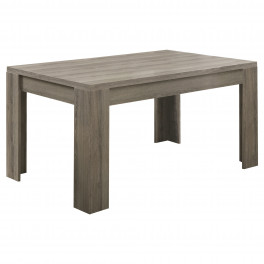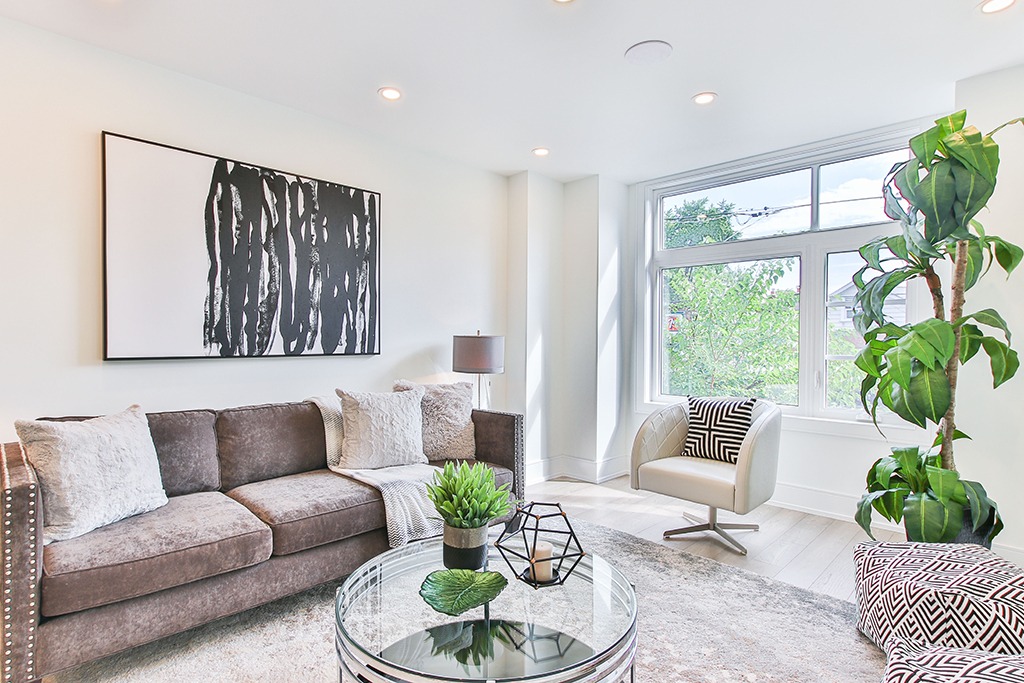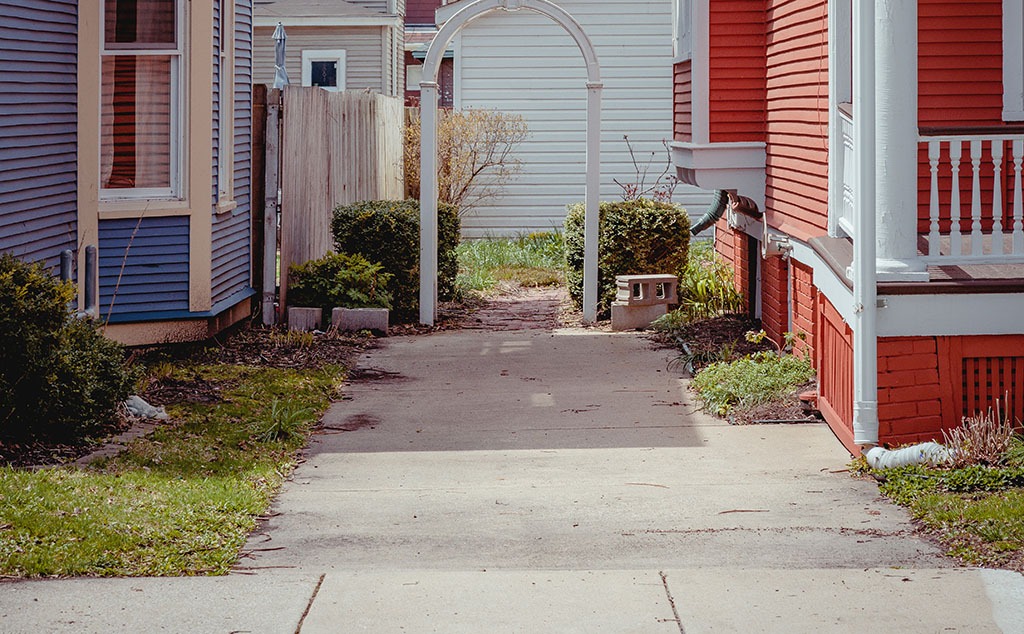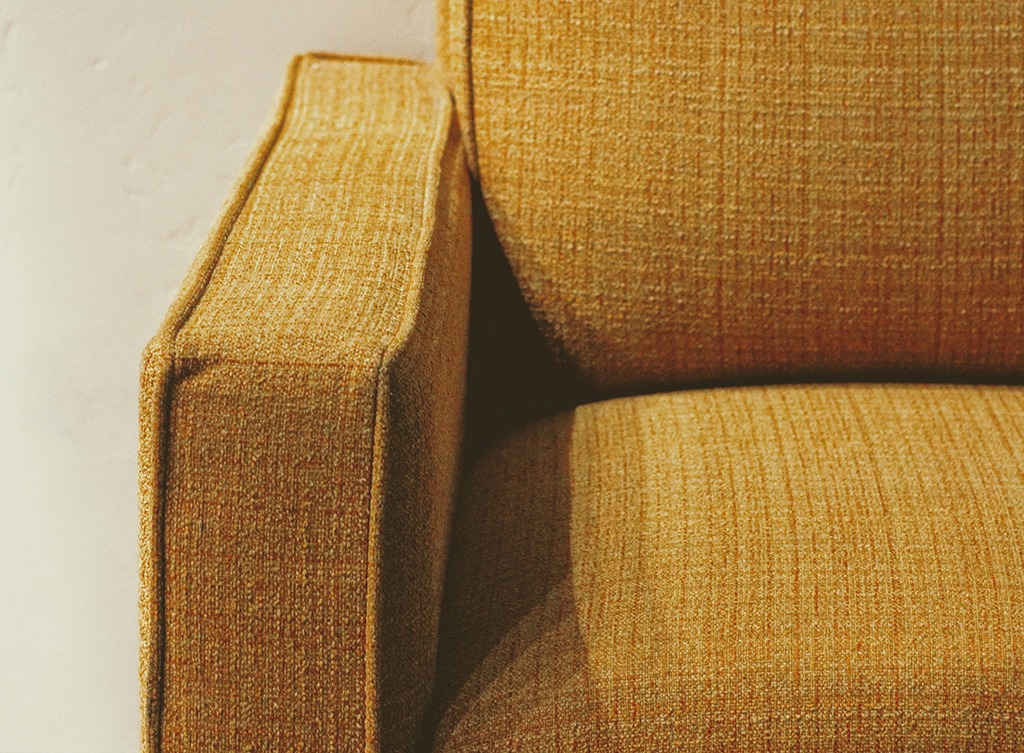What is the best dining room layout? An optimal dining room layout is one that conforms to three requirements: functionality, proper scale, and balance.
Whether you have a dedicated dining room or you’re creating a dining area in an open floor plan, the key to getting design elements placed correctly can’t be simplified to a simple formula of table goes here, chairs go there, hutch is behind them, etc. And this is a good thing. You have a lot of room for creativity when you design your dining room… as long as you follow three simple guidelines.
This dining room layout guide explains those guidelines and how to follow them.
Tip 1: Make it Functional
A dining room, above all else, is a functional space. No matter how pretty it’s, if a dining room doesn’t make it easy and enjoyable to have meals, it’s a big fat fail.
So how do you make a dining room functional? You do it with a trio of rules for chair spacing, rug placement, and furniture spacing.
Chair Spacing
This rule is pretty simple. Position your dining room chairs far enough apart that your diners can eat without playing “bonk the elbow.” This distance will vary a bit depending on the size of the people who gather at your table, but a good rule of thumb (or is that elbow?), is positioning chairs at least 18 inches apart. This should provide enough space for most people.
Rug Placement
Part of comfortable dining is being able to pull out a chair to sit down and eat. Because of this, if you decide to have a rug in your dining room, choosing the right dining room rug and then putting it in the right place is key to a dining room’s functionality.
Here’s how to get these elements right. First, pick a rug that extends at least 18 inches beyond the back legs of the chairs placed around the table. Second, center the table on the rug. That’s it. If you do these two things, you can move chairs in and out from the table without chair legs getting caught on the rug.

Photo by romakoma on Shutterstock
Furniture Spacing
Dining room layout ideas can vary from table and chairs only to a room full of sideboards, hutches, benches, and fireplaces. No matter how many furniture pieces you want in your dining room, you still have to abide by this unbreakable rule: leave enough space to comfortably walk around the dining room table, even when the chairs are occupied. If you get that spacing right, the room will serve its purpose. Plus, that extra space will give all of your furniture, even if there’s a lot of it, room to breathe.

Photo by mavo on Shutterstock
Tip 2: Create Proper Scale
Scale in interior design is matching the size and visual weight of design elements to the space they’re in. In broad strokes, large furniture or design pieces or a large number of furniture or design pieces belong in large spaces. Small pieces or a small number of pieces belong in small spaces. In other words, fit your furniture and design elements to your room.
When it comes to a dining room furniture layout, this guideline requires that you fill a large dining room with enough furniture and you don’t overstuff a small dining room. What do you do, though, if you don’t have enough furniture for a big room or you have more furniture than is ideal for a small room?
Here are two fixes for these situations:
Big Room with Not Enough Furniture
If your room is large and all you have is a table, you can still fill the space without buying more furniture. You do this by going big with your fixtures and accessories. A large chandelier and some weighty draperies, for example, can compensate for a lack of furniture. Some large accessories placed on the floor will help as well. This spacious dining room look is, in fact, one of the more attractive modern dining room ideas.

Photo by Artazum on Shutterstock
Small Room with Too Much Furniture
If you have a hutch or chest to include in a small dining room, you can get the scale right if you position your extra furniture in a corner. This placement works especially well with a round table.

Photo by Artazum on Shutterstock
Tip 3: Balance the Room
Balance in interior design is about equalizing the visual weight of elements on opposite sides of a space. Visual weight isn’t the same thing as actual weight. It’s the sense that something is weighty. Getting balance right is a matter of feel. You can generally just tell when a room is out of balance. It will feel somehow “off.”
Balancing a dining room with just a table and chairs is easy, of course. Balance becomes a bit more challenging when you bring in extra furniture pieces. Hutches and sideboards have to be positioned so as not to throw the room off-kilter.
To get this right, follow two simple rules:
Furniture on Both Sides
If you add a large furniture piece on one wall of your dining room, you must add furniture of similar visual weight to the other side. If your dining room is in an open floor plan, a hutch against the wall can be balanced by the living room furniture on the other side of the table. In an enclosed dining space, opposing walls will need furniture. The furniture doesn’t have to be an exact match of size. In fact, that would look too bookend-y. Instead, balance a tall, solid piece like a hutch or armoire with a shorter piece like a sideboard. To get the balance in height, pair the sideboard with wall art, plants, or a mirror.

Photo by pics721 on Shutterstock
Pair up with a Window
If your dining room has a prominent window on one side, the opposing wall needs a significant design presence. Ideally, a hutch will balance a big window. If you don’t have a hutch, a low cabinet combined with wall art will work. So will large wall art on its own.

Photo by Artazum on Shutterstock
As you can see, the rules are pretty simple, right? You can mix and match a myriad of dining room furniture, fixtures, and accessories and still create a beautiful dining room layout if you follow these guidelines.
Images used with permission, courtesy of www.shutterstock.com



























